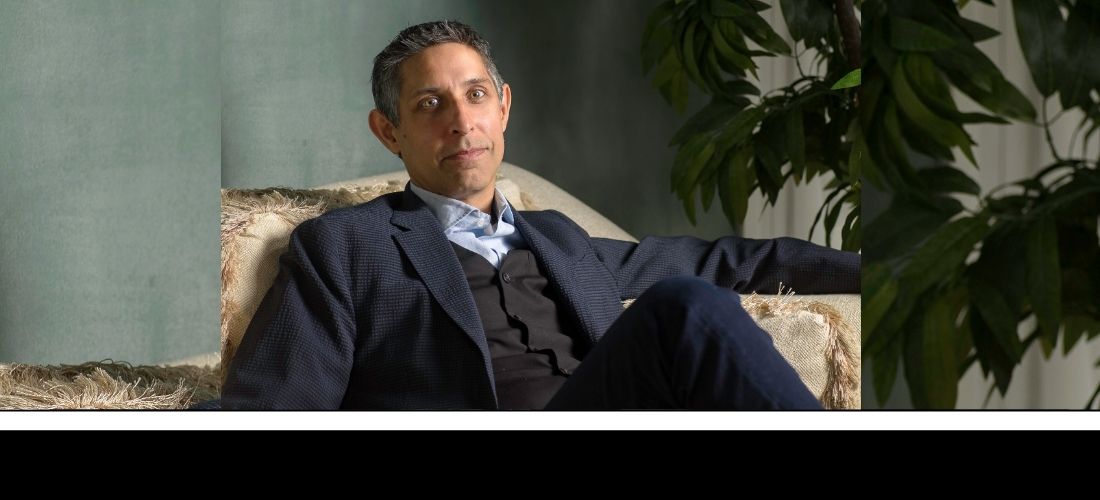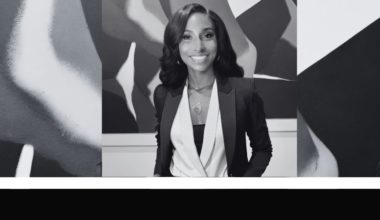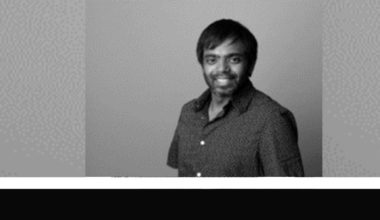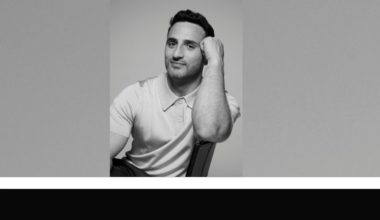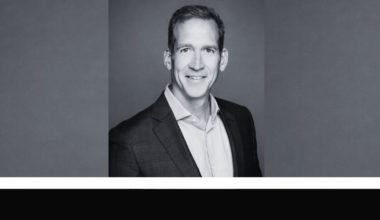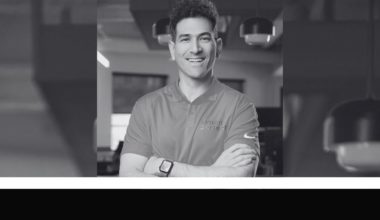Michael K. Sahota, CEC, controversial thought leader and keynote speaker revealing the truth of organizational realities and what it takes to create high performance. Michael is the founder and CEO of SHIFT314 Inc – a leadership training and consulting organization, specializing in new ways of working, Agile, Digital, Lean and Evolutionary Leadership. He is the co-creator of the SHIFT314 Evolutionary Leadership Framework™ (SELF), an integrated system for organizational transformation that has the ability to deliver extraordinary results for Business Agility.
Michael has trained thousands of leaders worldwide through his highly accoladed Certified Agile Leadership Training. Michael gained notoriety in 2012 with his groundbreaking book “An Agile Adoption and Transformation Guide” on the forefront of leadership and culture. Co-Author of Emotional Science (2018) and the latest book “Leading Beyond Change ” a practical guide on “How To” lead evolutionary change and unlock the success of your organization.
Tell us a little bit about your background and how you ended up writing a book?
I started out researching artificial intelligence, looking at how to get robots to work together in complex environments. Now, fast forward, and I’m looking at, how do we get a group of complex human beings to work together within a complex system?
This later journey started out when I was working as a project manager in organizations, trying to get people to use this thing called Agile Software Development, and understanding that there’s a lot of complexity to get human beings working together. This took me on this journey to actually be successful helping organizations transform, which led me to begin looking at, “Well, what is culture? How do we understand culture? And ultimately, what is leadership? And how do we understand that?” And that’s led me to reinvent this whole approach to who we are as human beings, and how we interact; because that determines the outcomes we create. This book, Leading Beyond Change, is the distillation of everything I’ve learned on that journey.
What do you hope your readers take away from this book?
I hope for readers to be transformed by understanding that it is possible to lead high performance while creating safe, happy work environments. We call this from Traditional Organizations to Evolutionary ones. My hope is that the book will help people understand how we’ve been caught in the web of hierarchical businesses-as-usual, command and control, industrial management paradigms, and how these pervade all aspects of organizational functioning. And I hope people realize, “Oh wait a second. It’s possible for human beings to work in very different ways that lead to very different results.”
We believe it is possible to evolve an organization to be more effective by creating change in the workplace, and be more effective in delivering on organizational goals and results. We do this with specific business patterns, practical tactical applications, and how to be an Evolutionary Leader, one who can show up to lead new ways of working.
We give a very direct roadmap of how to create high performance through an evolution of the organization. The book is a practical guide to understand where you are, and where you might want to go, and what are the steps to get there.
What are the top three tools you are currently using to write, publish, and promote your books?
- The first tool is testing the material. All the material in this book has been tested by using it in training courses and the impact and success of our students. We have developed a system of how to evolve one as a leader and the practical steps to evolve an organization. We realized there was too much information to give in a course so we decided to write some of it into a book and reach a leather audience and have something tangible for our students to go back to and receive more information.
- The second tool is saying “yes” to iteration and evolution. I think sometimes we have this naive idea that we’ll sit down, we’ll write the book, we might do a bit of editing, and then we’re done. Of course, it’s rarely that simple. This particular book, it’s really version three. Version one was too academic. Version two was really good, but it didn’t have a central theme tying it together. Version three, which happened very, very rapidly after feedback, is really just extraordinary because we discovered what the central theme was. It’s important to take time to iterate, to get feedback. Test the book. Test to see how effective the book in its current structure is in achieving your objectives.
- The third one is using the power of illustrations. And what I mean by that is, if you really understand what it is you’re communicating, you can draw a picture for it. You can have a simple illustration, illustrating the key idea. This is actually a way of testing your ideas. Because if you really understand the essence of what you’re communicating in a paragraph or a section or a chapter, you can have a drawing that captures that.
I do my own drawings, but I worked actually with a professional illustrator, and just the act of figuring out, “What is the essence of this chapter?” really helped clarify the essential message in each section. It helped us make sure we were getting the distilled essence to people.
One more bonus tool: use the power of crowdsourcing. That is, don’t try to do it alone. We’re all smarter together. When we utilize the collective intelligence around us, we can create a better result. What we are finding is that people within our industry have approached us wanting to create book clubs.
Our job is to help others be successful through webinars, videos on YouTube, articles, whitepapers, and free downloads of sample chapters of the book, a companion workbook and another PDF of all the illustrations.
When will you consider your book a success?
For us, the book is a success already. Why? Because we learned so much through the process of writing the book- we were able to clarify the content and uncover the essence of our work. Number two, the book creates a place for the leaders we train around the world to go deeper into the subjects we present. Training is not enough, there needs to be time for study and application. Leading Beyond Change serves its purpose by helping leaders who want to grow, by providing deeper explanation of the teaching and the tools so they can spend more time exploring the concepts while in application mode of real-time. It is the guide book to support their evolutionary journey.
Can you share a snippet that isn’t in the blurb or excerpt?
The first step to improve organizational performance is to understand and improve personal leadership abilities. The challenge isn’t just taking the first step – it is understanding the map. This book provides a useful map for the steps you’ll take to get there. In Leading Beyond Change, you will find a book that will challenge your understanding and expand your imagination.
What have been your biggest challenges and how did you overcome them?
Probably the biggest challenge with getting this book out was when we were three weeks away from the deadline for finishing the manuscript, and we realized that the book would become way more extraordinary if we did a rewrite and added in new content – a new unifying theme for the whole book. So, that was a mad three weeks.
That was a very, very intense and rewarding period because we could see how putting in that effort would elevate the results so much. That was probably the biggest challenge of the book.
Another challenge was working with a deadline because that meant trying to find time amongst business activities for writing. However, I think that’s where actually really having deadlines helps; and working with the traditional publisher certainly helped with that, break out of this, “Oh, I’ll finish it when it’s ready.” Well, the truth is, that we will often want to go on perfecting and perfecting and perfecting. So at some point, we’re at the point of diminishing returns, and it’s better just to ship it than to keep on fiddling.
I’d say the other challenge was really around the illustrations; to try and get illustrations that actually captured the essence of each point. And it’s a very interesting process, because it’s not just having an interesting illustration; that’s easy. But having one that actually captures the essence; sometimes it took like a lot of work, for seemingly very simple ideas, so that the image actually fully conveys exactly the meaning that’s required. And it turned out to be incredibly subtle, and at the same time, incredibly rewarding and powerful.
Please share one thing new self-published authors can do to gain more reviews on Amazon
What we want are reviews that matter; and how to get reviews that matter are to have something that really helps people and is well-written. And that goes back to the testing phase I was speaking about earlier; testing your ideas to make sure that they’re really adding value to people. Because if they add value to people, people will very happily write endorsements on Amazon and other places. Just focus on helping people. The book is not about you; the book is about how you can help make the world a better place.
Can you share some of the marketing techniques that have worked for you when promoting your book?
We’re actually still fairly early in the marketing space. What has been helpful so far is just recording informal videos talking about the book. Speaking about the book at Meetup groups and so on has also been helpful – there’s really a chance to share something of value to people, and also to have them connect deeply with the book. So those would be the top two that we’ve found so far. We have other ideas, but we haven’t tested them yet, so I can’t report on those.
What are you learning now? Why is that important?
I think probably the biggest thing I’m learning now is, nobody really cares about us as authors. Nobody really cares about how great the book is. All people want to do is figure out how they can be successful. So it’s understanding that that’s where everyone’s coming from. It’s not about me, it’s not about my book. It’s really about, “What are people struggling with? How can they be helped?” And then using that as a vehicle for leading into the book. The important thing is to focus on really helping people be successful.
What’s your best piece of advice for aspiring and new authors?
My biggest secret for success was to have retreat time. I know some people say, “Oh, just make sure you carve time every day to write.” My big secret was having one or two weeks at a time in a remote location, to just enjoy nature, do writing, and that’s it. And that must be the primary goal, right? Not to do other things, just to write. So that’s been my secret. And my favorite place for retreat is New Zealand. That’s actually where most of the book was written, in a beach house in New Zealand, or a bach, as they call it locally. So, make dedicated time; if it’s important for you, make time just for writing.
How do you personally overcome fear?
I also co-wrote a book called Emotional Science where we explain that most people do not understand how their emotions work. So I eat my own dog food, which is, using a practice from the book called “Get Clear”. This is a technique of paying exquisite attention to my fear. Using the breath with body awareness. This type of awareness is the technology that dissipates fear. My wife, Audree Tara, and I both study consciousness in India. All of our work through training, consulting, and books – Leading Beyond Change and Emotional Science – are from our own personal journey of evolution and creating extraordinary success. We say, “You are the problem and you are the solution”. It’s a radical way of viewing organizational change to unlock results in any system.
What is your favorite quote?
“Only a transformed person can transform the world.”
-Attributed to Yogananda; although I can’t find the proof anywhere.
How can readers get in touch with you?
You can get in touch with me through LinkedIn or through our website: shift314.com.
Author Interview: Art Bell, Founder of Comedy Central, Tells His Story

